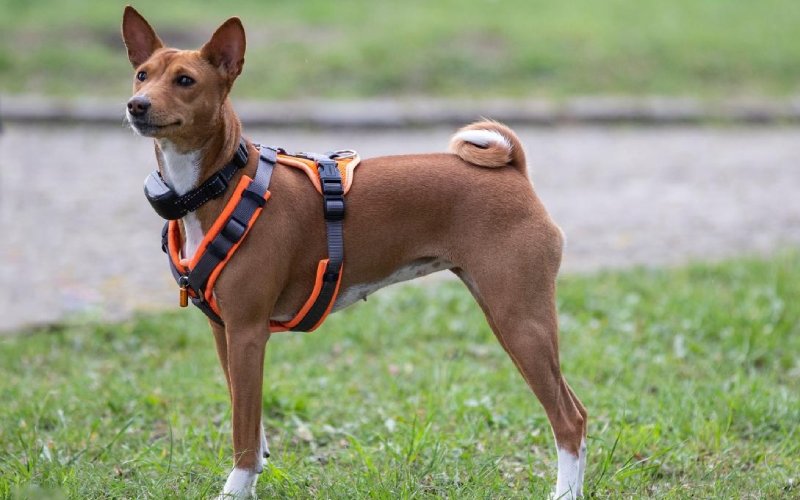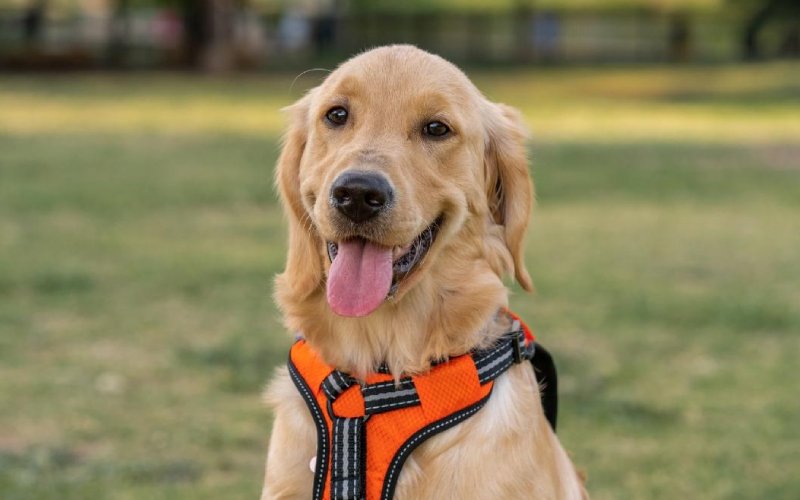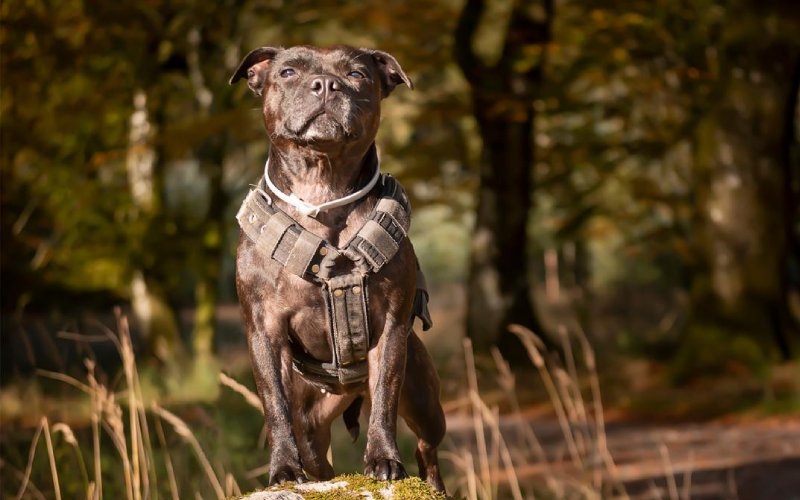Harnesses are a common tool for dog owners, but they’re not always the perfect choice for every pet. Have you ever wondered why some dog owners, and perhaps even dogs themselves, might not be fans of harnesses? What are the underlying reasons that make harnesses less favorable in certain situations?
Harnesses can cause discomfort, overheating, and limited control during training. They might encourage pulling behaviors, unsuitable for certain breeds, and require more maintenance. Understanding these factors is important for your dog’s well-being.
Stay with us to uncover the 10 reasons why we do not line harnesses and the insights that will help you make the best decision for your furry friend’s comfort and safety.
1. Discomfort for the Dog
When we talk about harnesses and our furry friends, we really need to think about comfort — something that’s super important but often forgotten. You’ve seen it, right? A dog wiggling and looking unhappy in a harness that’s just not fitting them right. It’s not only about the size of the harness. The design, the fabric, and how it sits on their body are all big deals for their comfort.
Imagine having shoes that pinch your feet or a shirt that keeps creeping up — that’s what a bad harness feels like for a dog. And it’s not just annoying for them; being uncomfortable can lead to bigger problems. They might start acting differently or even not want to go on walks anymore. And we all know, walks are like the best part of their day!
2. Difficulty in Putting On
Okay, so here’s another thing that can be a bit tricky — actually getting the harness on your dog. If you’ve ever tried putting a harness on a super energetic dog that just won’t stay still, you totally know it’s not a walk in the park. It’s almost like they magically transform into this wiggly, jumpy ball of fluff, and suddenly, you’re wishing for an extra pair of hands.
Some harnesses come with so many straps and buckles, it’s pretty much like you’re trying to crack a puzzle each time you’re getting your dog ready for their walk. This can be a real challenge, especially for people who are new to the whole dog-owning world. They’re still trying to figure out how to best handle their furry friends, right? This whole process can end up being super stressful, for both the dog and the owner. Turning what should be a fun, getting-ready-for-an-adventure time into a real test of patience and quick moves.
3. Chafing or Rubbing
So, let’s talk about another discomfort that can happen with harnesses — chafing or rubbing. This is a big problem, especially with poorly designed harnesses. They can rub against your dog’s skin, kind of like how new shoes rub against our feet and give us blisters. For dogs, this rubbing can happen around their neck, under their arms, or on their chest.
Especially if they’re super active and the harness keeps moving around. It’s not just the immediate discomfort; if this rubbing keeps up, it can lead to worse skin problems or even infections — and that’s definitely not what we want for our furry buddies.
4. Overheating
In the world of dogs, especially when it’s really hot, worrying about them getting too hot is a big deal. Harnesses, which are great for keeping them safe and under control, can sometimes make this worse. The material and design of some harnesses trap heat and restrict airflow. That makes it difficult for dogs to cool down and this is particularly true for breeds with thick fur or those prone to overheating.
Think about wearing a heavy sweater on a super hot day — that’s what it might feel like for a dog in a harness that doesn’t breathe well in the blazing sun. It’s really important for dog owners to think about how hot it is where they live. And if their dog can handle the heat well when they’re choosing a harness.
5. Limited Control for Training
When we talk about training sessions, which are a big part of having a dog, harnesses might not always be the best choice. This is really noticeable when you’re trying to teach your dog how to walk nicely on a leash or to follow commands. Some dog owners notice that harnesses don’t give them much control over their pets and this makes it tough to stop behaviors like jumping or not listening.
The way a harness is made spreads the force over the dog’s chest and back. This can be less useful for getting your point across compared to how a collar works, which puts pressure right around the neck. For owners who are trying to train their dogs, this can end up being frustrating and slow down the learning process. It’s all about finding the right balance — making sure your dog is comfortable and you also have enough control to teach and guide them properly.
6. Can Encourage Pulling
Sometimes, using certain types of harnesses can accidentally lead to your dog pulling more. This happens with some harnesses, especially the ones that clip on the back. They can actually make a dog more likely to pull.
Here’s the reason: these harnesses can set off a dog’s opposition reflex. This is like their natural urge to push against something that’s pushing them. In this case, the more a dog pulls, the more they feel the harness pushing against them, which makes them want to pull even harder. It’s kind of like when you try to push open a door that’s meant to be pulled; the harder you push, the more it resists. This can end up teaching your dog to pull more during walks, turning a peaceful stroll into a tug-of-war.
So, understanding what type of harness you’re using and how it affects your dog’s behavior is really important to stop or fix any pulling problems.
7. Fearful Dogs
A significant concern for lots of dog owners is how scared their pets get about harnesses. It’s pretty common for dogs to freak out about having a harness put over their head or body. This fear might come from the weird feeling of wearing a harness. Or maybe they had a bad experience with one before.
For a dog, having something wrapped around them can be really scary and uncomfortable — it’s kind of like how some people feel really uneasy in tight spaces. This fear can make a simple thing like putting on a harness a big, stressful deal for both the dog and their owner. To help a scared dog get used to a harness; you need a lot of patience and training.
8. Inadequate for Certain Breeds
Another issue that arises with harnesses is their suitability for certain dog breeds as dogs come in a vast array of shapes and sizes. What works for one may not work for another. Some breeds, such as those Greyhounds or Bulldogs have unique body shapes. They might not fit well into standard harnesses. These breeds often require specially designed harnesses. That accommodates their unique physical characteristics.
A harness that doesn’t fit properly can cause discomfort and, restrict movement, or even lead to escape. It’s like trying to fit into a piece of clothing that’s not made for your body type—it’s either too tight, too loose, or just plain uncomfortable.
9. Maintenance and Cleaning
Harnesses also come with their own set of maintenance and cleaning challenges. Unlike collars—which are relatively easy to clean-–harnesses can require more effort. Especially after outdoor activities. They can trap dirt, debris, and odors. And, depending on the material, it can be difficult to clean thoroughly. This is particularly true for harnesses used in activities like hiking or swimming. Where they’re exposed to mud, water, and other elements. Regular maintenance is importantly to prevent the buildup of dirt and bacteria. That can lead to skin irritations or infections. It’s like having a piece of clothing that requires special care; it’s an additional task that needs to be factored into the routine of caring for your dog.
10. Potential Health Issues
When you use a harness on your dog the wrong way, it can cause some health problems. Think about it — if a harness keeps rubbing or chafing against their skin, especially in spots where it’s touching them directly, it’s like getting a really bad rash. And then, harnesses that are super tight can make breathing hard for your dog. It’s kind of like if you wore a backpack that’s way too tight; it can rub against you, make it tough to breathe, and just be really uncomfortable after a while. These health issues really show why it’s super important to pick the right harness for your dog and make sure it fits them just right to avoid any potential harm to your dog’s health and well-being.
Making the Right Choice for Your Dog
When it comes to picking the right thing for your dog—like a harness or a collar—consulting with veterinarians and professional dog trainers is necessary. They can provide invaluable insights into making the right decisions and can offer advice tailored to your dog’s specific health (respiratory issues), behavior, and lifestyle needs. They can help you understand if a harness is the right choice for your dog or if a collar would a collar will be better. By choosing carefully, you’re not just picking out something for walks; you’re actually making your walks better and improving life for both you and your dog.
972-372-9225
[email protected]
olk9dfw.com




